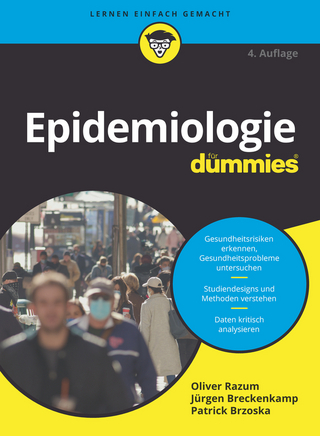
Genetic Effects on Environmental Vulnerability to Disease
John Wiley & Sons Inc (Verlag)
978-0-470-77780-0 (ISBN)
- Titel ist leider vergriffen;
keine Neuauflage - Artikel merken
How epidemiological cohort studies can better integrate physiological (mechanistic) measures;
How best to characterise subjects’ vulnerability versus resilience by moving beyond single genetic polymorphisms;
How gene hunters can benefit from recruiting samples selected for known exposures;
How environmental pathogens can be used as tools for gene hunting;
How to deal with potential spurious (statistical) interactions, and
How genes can help explain fundamental demographic properties of disorders (e.g. sex distribution, age effects).
Prof Sir Michael Rutter, King's College, London, UK Prof Rutter is the leading child psychiatrist in the UK. He set up the MRC Child Psychiatry Research Unit and the Institute of Psychiatry's Social, Genetic and Developmental Psychiatry Centre. He was Deputy Chairman of the Wellcome Trust from 1999 to 2004, and has been a Trustee of the Nuffield Foundation since 1992. He was elected a Fellow of the Royal Society in 1987 and an honorary member of the British Academy in 2002.?He was a Founding Fellow of the Academia Europaea and the Academy of Medical Sciences, of which he is currently Clinical Vice-President. He has published extensively.
1. Michael Rutter Introduction: whither gene–environment interactions?
2. Rudolf Uher
Gene–environment interaction: overcoming methodological challenges
Discussion
3. Marco Battaglia, Cecilia Marino, Michel Maziade, Massimo Molteni and Francesca D’Amato
Gene–environment interaction and behavioural disorders: a developmental perspective based on endophenotypes
Discussion
4. Naomi R. Wray, William L. Coventry, Michael R. James, Grant W. Montgomery, Lindon J. Eaves and Nicholas G. Martin
Use of monozygotic twins to investigate the relationship between 5HTTLPR genotype, depression and stressful life events: an application of Item Response Theory
Discussion
Appendix
General discussion I
5. Harold Snieder, Xiaoling Wang, Vasiliki Lagou, Brenda W. J. H. Penninx, Harriëtte Riese and Catharina A. Hartman
Role of gene–stress interactions in gene-finding studies
Discussion
6. Kenneth A. Dodge
Practice and public policy in the era of gene–environment interactions
Discussion
7. Kristi B. Adamo and Frédérique Tesson
Gene–environment interaction and the metabolic syndrome
Discussion
General discussion II
8. Stephen P. Robertson and Richie Poulton
Longitudinal studies of gene–environment interaction in common diseases—good value for money?
Discussion
9. Kee-Seng Chia
Gene–environment interactions in breast cancer
Discussion
10. Malak Kotb, Nourtan Abdeltawab, Ramy Aziz, Sarah Rowe, Robert W. Williams and Lu Lu
Unbiased forward genetics and systems biology approaches to understanding how gene–environment interactions work to predict susceptibility and outcomes of infections
Discussion
11. Steven R. Kleeberger and Hye-Youn Cho
Gene–environment interactions in environmental lung diseases
Discussion
General discussion III
12. Fernando D. Martinez
Gene–environment interaction in complex diseases: asthma as an illustrative case
Discussion
13. Michael Rutter
Conclusions: taking stock and looking ahead
Glossary
Index of contributors
Subject index
| Erscheint lt. Verlag | 1.8.2008 |
|---|---|
| Reihe/Serie | Novartis Foundation Symposium |
| Verlagsort | New York |
| Sprache | englisch |
| Maße | 160 x 232 mm |
| Gewicht | 510 g |
| Themenwelt | Studium ► Querschnittsbereiche ► Epidemiologie / Med. Biometrie |
| Naturwissenschaften ► Biologie ► Genetik / Molekularbiologie | |
| ISBN-10 | 0-470-77780-X / 047077780X |
| ISBN-13 | 978-0-470-77780-0 / 9780470777800 |
| Zustand | Neuware |
| Haben Sie eine Frage zum Produkt? |
aus dem Bereich


